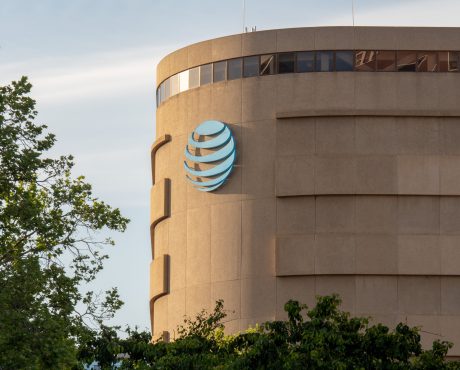Time to Check Out T Stock
Would you be interested in owning shares of a century-old company that saw its stock price plunge more than 15% over the past two years?
I assume a fair portion of you would answer “no.”
Now, would you be interested in owning a 6.7%-yielding dividend stock that has raised its payout every year for 35 consecutive years and will likely continue to do so?
Well, given that the average S&P 500 company currently pays less than two percent, a 6.7%-yielding dividend grower certainly looks attractive.
The thing is, though, the two questions above are actually referring to the same company: AT&T Inc. (NYSE:T).
AT&T Inc.: Not a Market Favorite at the Moment
Commanding over $220.0 billion of market capitalization, AT&T is one of the largest telecommunications companies in the world. But this earnings season, T stock hasn’t really been a market favorite.
The company reported earnings on April 24. Its report showed that, in the first quarter of 2019, it generated $44.8 billion in consolidated revenue, representing a 17.8% increase year-over-year. Growth was primarily driven by the company’s acquisition of Time Warner Inc. last summer. (Source: “AT&T Reports First-Quarter Results,” AT&T Inc., April 24, 2019.)
Excluding special items, AT&T’s adjusted earnings came in at $0.86 per diluted share in the first quarter, up $0.01 from the $0.85 per share earned in the year-ago period. In other words, the company managed to improve both its top- and bottom-line numbers for the quarter.
But as we know, in this day and age, companies are not just competing with themselves in earnings season; they are also facing a set of expectations from Wall Street. And that’s where AT&T’s numbers kind of fell short.
The company’s adjusted earnings of $0.86 per share was in line with analysts’ consensus estimate. But its revenue of $44.8 billion was lower than Wall Street’s projection of $45.1 billion. (Source: “AT&T Inc. (T),” Yahoo! Finance, last accessed April 25, 2019.)
On the day of AT&T’s earnings release, T stock tumbled 4.1%, which was quite a sizable drop for a mega-cap blue-chip company.
In fact, if you look a bit further back, you’ll see that the share price performance of AT&T Inc. has been rather disappointing for quite some time. In the past two years, T stock has fallen 15.4%.
AT&T Stock Chart
Chart courtesy of StockCharts.com
An Overlooked Dividend Growth Stock
But here’s the thing: while AT&T didn’t really deliver many capital gains to investors during this period, it didn’t forget to return cash to them through dividends.
As a matter of fact, those cash payouts are actually growing. In December 2018, the company’s board of directors approved a two-percent increase to AT&T’s quarterly dividend rate to $0.51 per share. The announcement marked the 35th consecutive year in which AT&T has raised its payout. (Source: “AT&T Increases Quarterly Dividend 2 Percent,” AT&T Inc., December 14, 2018.)
That is to say, T stock is a “Dividend Aristocrat.” To become a Dividend Aristocrat, a company must have increased its dividend every year for a minimum of 25 consecutive years.
Needless to say, the Dividend Aristocrats are highly sought after. And due to the inverse relationship between dividend yield and stock price, the high investor enthusiasm toward these companies means most of them don’t offer much in terms of yield.
For instance, if you were to purchase the ProShares S&P 500 Dividend Aristocrats ETF (BATS:NOBL), an exchange-traded fund that tracks all the S&P 500 Dividend Aristocrats, you would currently earn an annual dividend yield of just 2.1%.
And that, my dear reader, is why AT&T stands out. Due to the drop in its stock price, the company can offer a substantial yield to today’s investors, despite carrying the prestigious Dividend Aristocrat title.
With a quarterly dividend rate of $0.51 per share and a share price of $30.52, AT&T stock has an annual yield of 6.7%.
The payout is also safe. Last year, the company generated $22.4 billion in free cash flow, representing a 36% increase from 2017. Considering that AT&T paid total dividends of $13.4 billion for the year, it achieved a free cash flow payout ratio of 60%. (Source: “AT&T Reports Fourth-Quarter Results,” AT&T Inc., January 30, 2019.)
In the first quarter of this year, AT&T earned $5.9 billion in free cash flow while paying $3.7 billion in dividends. That translated to a payout ratio of around 63%.
Therefore, in spite of decades of continuous dividend increases, the company actually maintained a rather conservative payout ratio. This not only creates a margin of safety, but also gives management plenty of room for future dividend hikes.
Don’t forget that, while AT&T shares aren’t exactly hot commodities, the company is still growing its business. For full-year 2019, the company expects to deliver low single-digit adjusted earnings per share growth. Free cash flow is projected to be around $26.0 billion for the year, which would represent a 16% increase from the $22.4 billion generated in 2018.
As a result, management expects the company to have a dividend payout ratio in the high 50% range for 2019, and that ratio has taken into account the higher cash dividend to be paid for the year.
The Bottom Line on AT&T Inc.
At the end of the day, keep in mind that when a company decides to pay a dividend, it doesn’t need the approval of the overall stock market. What this means is that, even if sentiment doesn’t improve for AT&T stock, the company’s shareholders can still get paid in cash from the quarterly dividends.
Adding in the fact that T stock offers a generous 6.7% yield and has the ability to further grow its payout, it surely deserves the attention of every income investor.
